Today we start a series of workshops in Tamnougalt, Zagora (Morocco), in partnership with Kasbah des Caïds, Labina and Marsad Drâa. The first one will be in the madrassa (18th century), where we will consolidate the structure. More information in: www.marsadsraa.com
Obûr (عبور): the origin /
Long time ago, I told myself to accept all the invitations to give a talk or to participate in roud-tables, it did not matter if the organisers where public or private institutions, in the framework of big or small events, because you never know who could be among the audience. I think I have rejected just a few of them during the last ten years and I did it because I had another engagements at the same time, not because I did not consider them interesting.
In January 2008 (the 21st), Younès Rahmoun asked me to come to Tetouan, to share everything I was “discovering” during my stays in Lyon (and surroundings) and Madrid, related to contemporary culture (architecture, art, music, theatre, dance, cinema…). It was not easy to link all these disciplines and to transmit the need of being curious when talking about contemporary creation.
To be frank, I thought it was going to be a talk for all the INBA students, but finally it was just for 8 people, those from Younès’ atelier. It did not matter, I did my best. At the end, while almost all the students left quickly the classroom, one of them stayed and once I finished picking up my stuff, he came to talk to me, he wanted to show me his last project, related to “cartography”. It was an interesting project and later, during the lunch, Younès confirmed me it was one of the best students he never had.
Fine-Arts National Institut in Tetouan (INBA). January 2008
Some years later, in January 2010, Younès wrote me an email, he wanted to know if I still was in Ceuta or if I already came back to Lyon, because a young artist wanted to meet me in Tetouan, the one that two years earlier, when he was still a student, showed me his work after my talk at INBA. I agreed to meet both of them in Tetouan because I was going the stay the whole month in Ceuta.
We meet in a coffee and the young artist explained that he had a project, or rather a dream, to built an art school in a small oasis, near his city, Guelmim. For that, he needed an architect and he only knew one, besides with some sensibility towards contemporary art. I listened to him carefully but I had no idea where Guelmim was, so he told me it was a city in the south, considered the gate of the Sahara desert… I heard the word desert and my mind became overexcited. During years, I wanted to visit the south of Morocco, I already knew the north, and thanks to the French learnt in Lyon, also the center. If I never had come to the desert, it was because the only opportunity I had had, was with a travel agency, with ten or twenty AWD cars and I had promised myself to discovered the south with local people, and this young artist was just proposing me to come with him to the desert. He continued to talk and talk about his region, maybe trying to convince me to come to a such a far place, without knowing that I was just thinking about possible dates while he was talking and talking… At a moment, I interrupted him:
Listen to me Mohamed, when can we go to Guelmim, next week?
He could not believe I really wanted to come and moreover to do it so quickly. We finally agreed to come in two weeks. Younès have been listening the whole conversation and he just said something at the end:
Can I come with you?
In January the 25th, I left Ceuta (with the car of my brother because the Volvo was in Lyon), I picked up Younès in Tetouan and we head to the SOUTH, to Guelmim and Tighmert, to meet MOHAMED AREJDAL.
You will find on this album, the pictures we took during 6 days.
Watching the pictures, you realise the imaginary I had in mind concerning the desert, for example the desire of walking on the dunes (even if it was just the sand of a beach). But there were also amazing discovering, the oasis of Tighmert, the Nomad Memory Museum, the rammed earth architecture… and overall Arejdal family and Ahmed Dabah’s family.
10 years later, when I think about everything that has happened since that trip, I can say that I could never imagined everything I have learnt, all the places I have discovered, all the people I have met and all the friends I have made (in Tighmert, Zagora, Tissardmine, Marrakech...) and all the projets I have developed with friends (Marsad Drâa, Caravane Tighmert, Project Qafila, Sakhra). What I like most about not having a scheduled life, is to do not know what it will come next and to do not be afraid of it, keeping the capacity of adapting yourself to new circumstances, regardless the time, the efforts, the energy and the studies needed.
I also compare those pictures from 2010 with the ones I took during my last trip to the desert and I really feel there are two completely persons behind the cameras.
Now, we are in 2020, and even if I’m not used to celebrate anniversaries, I proposed Younès to do the same trip Ceuta-Tetuan-Tighmert, as a way to celebrate our friendship, sharing it with some friends that are an important part of this personal, why not intimal journal I initiated in 2010 without being conscient.
Talking to Mohamed Arejdal, he told us it was going to be a pity just to redo the same route we did in 2010, and that we should go further, physically and psychically, so he proposed to go to Mauritania and to cross the Sahara desert.
In some days, I will leave from Ceuta and I will pick up some friends on the way to the south of the south. We will be finally only three (Younès, Ahmed and myself) and we have some purpose but we are opened to what this trip will offer us. It will be important to cross the Sahara, I would rather prefer to do it by walk, but it is not possible right now, so we will do it by car, this time with the Volvo, to take a flight to Mauritania it was not an option, we have to cross by land.
We will try to visit the Adrar region, specially Chinguetti and Ouadane, it will be great because this region is the origin of the Almoravid dynasty, and I could learn and better understand the fortifications they built in Morocco, along the caravan routes.
Of course the caravans will be another subject to research. Chinguetti and Ouadane were Saharan ports linked to Tighmert, Tammedoulte and M’hamid El Ghizlane.
In summary, this trip will be about friendship and about historical research but we cannot forget the meetings we will have, taking into consideration that people from the Azouafit tribe (Ahmed’s tribe) are waiting for us.
I really don’t know what will come after this trip, just let’s try to keep the same opened mind I had in 2010 and then let's see what the future brings us.
talks and round tables in 2019 /
Madrid (Spain), Marrakesh (Morocco), Tetouan (Morocco), Northampton (USA) and Ceuta (Spain)
Performing and visual arts, architecture, urban and territory planning…
planificación urbana y territorial: ceuta 2050 /
Talk on urban and territory planning in Ceuta, considering the evolution of transport infrastructures in Northern Africa (in Spanish). It took place on December the 19th at the State Public Library of Ceuta and it was organised by Instituto de Estudios Ceutíes. More information clicking on the image:
una tarde para dialogar sobre el futuro de ceuta /
Mañana 19 de diciembre a las 19:30 en la Biblioteca Publica de Ceutahablaremos del futuro de Ceuta, con Adolfo Hernández Lafuente y José María Campos Martínez, en un evento organizado por el Instituto De Estudios Ceutíes y que podrá verse en directo por el Facebook de la Biblioteca Publica de Ceuta.
Para poder planificar una ciudad como Ceuta es necesario entender el contexto histórico, geográfico, político y económico, de Ceuta y de su entorno. La evolución regional requiere un dinamismo del que hemos carecido en los últimos 20 años, pero también nos ofrece unas oportunidades que antes nos parecían inimaginables, aprovechémoslas, osemos en la búsqueda de soluciones, recuperemos nuestra identidad e innovemos otra vez, aunque para ello tengamos que "reiniciar" las instituciones (y las mentalidades).
sahara desert and cinema (and myself) /
qafila rabiaa; first impressions /
For the second time, Project Qafila has organised (though Marsad Drâa and Caravane Tighmert) a caravan with artists and researchers. While we prepare all the material to be integrated on the website, you can have a look to some videos.
The first one is a discussion on geography. We tried to find the route we made from the beginning, which was easy for the first days but more complicated once we arrived to open spaces and specially sand landscapes, where there are no references on plans we had.
You can find more plans of Morocco on this link from the University of Texas at Austin.
The second video is a kind of epilogue where each participant tell their impressions after this experience. These are some of the comments:
Driss Benabdallah
I wanted to come back to the earth, the elements ... also to find a space to see things differently.
Ahmed Dabah
This is my first time doing the caravan on foot, it is really a beautiful experience, especially to know another place outside the region of the wadi Noun. I also wanted to develop my knowledge as a guide.
Souad El Maysour
It was important to experience a physical and emotional ordeal that was so far unknown to me. It's a trip with the others too ...
Laila Hida
It was unimaginable to lose myself ... my landmarks were people, while in town my landmarks are elsewhere; this space forces you to rethink your priorities, or at least rethink how you navigate in space and in life.
Abdeljalil Saouli
For me, walking is trying to understand my space for reflection. When I walk I think more, when I walk I see more. Leave a river (oued Ouarga) and look for another (oued Drâa), it marks me.
Youssef Titou
These people are very simple, minimalist, they do not complicate their lifes... I would like, one day, to arrive at that, sincerely.
The video is in French, but you can activate the automatic translation in English, Spanish… so you can have a better idea of the conversation.
In the video there is a key element of the desert; darkness. It is synonymous with danger in our cities. We have been taught to be always under a light and to be afraid of the dark. However, in the desert (during different caravans) we always sought the darkness, we always wanted to move away from cities, villages, bivouacs, roads, tracks ... Ultimately, we flew the artificiality of the light because it hides us different dimensions that only are perceptible in the darkness.
It is only a proof of the contradictions to which the cities force us and that the desert highlights.
virus "desert" /
I found it! The origin of the virus.
In the house where I grew up in Ceuta, there was a painting by Pepe Bermejo, a colleague of my father that was assigned to Sidi Ifni and Laâyoune during the Spanish protectorate. When I was a child, I thought it was just an orientalist painting but I was not aware what it really meant, to someone like Pepe, to have lived in the desert. That image was something he experimented himself and now, that I know something about the desert, I can understand the impact it had on him.
When I recently found this painting in another apartment of my family, I realised the power of images when they are inoculated during years. It was not just another painting of the decoration of our living room, it had a purpose, a dangerous one, and it succeeded on me…
The problem of this kind of ”sickness” is that there is no cure and it is very, very contagious.
I hope that the friends that have been infected by myself will forgive me one day.
tasghimout workshop /
The history of Marrakech can not be dissociated from the territory that surrounds it, which moreover must be considered on several levels and scales. Thus geography, geology, hydrology, agriculture, sociology, history ... provide fundamental elements to understand its heritage.
The association LABINA and Marsad Drâa propose Saturday, November the 9th a day of study dedicated to heritage with a visit to Tazghmout, fortification built by the Almoravids in the 12th century to control the passage of caravans from the south through Tichka. With a surface area of 67 hectares it is probably the largest Almoravid fortification in Morocco.
During the visit, we will analyze the landscape and the construction system of the remaining elements (walls, gates, towers ...) and we will propose a series of workshops, to be developed later, with theoretical and practical courses. on this heritage. Workshops will also be held with residents of neighboring villages to raise awareness of the importance of heritage and its conservation.
There will be 20 places for architecture students or young architects. The visit will be supervised by Oussama Moukmir and Carlos Perez Marin.
The venue will be the village of Tamzaghart, between Ait Ourirt and Ourika at 9:30. The participants will have to bring their meals because we will return at the end of the afternoon and they will have to register by sending an email to:
o.moukmir@gmail.com
or
carlosperezmarin@gmail.com
qafila rabiaa: episode 1 /
Since 2016 I develop a practical research on caravans and nomadism, walking through the same routes caravans did in the past. You will find more information on our website (click on the image).
The 4th caravan will be a short one, a way to make discover some artists friends what it means to walk with nomads and to live in the middle of the desert. We will start next week in a point between Zagora and Foum Zguid and we will arrive one week later to M’hamid El Ghizlane where we will attend Taragalte Festival and we will share the culture of the desert with people from Mauritania, Mali, Niger…
This is the “theoretical” route we will follow, then, the desert and the nomads will say…
culture development in morocco /
an architect between three seas /
A talk on my personal experience as an architect working, living and researching between the Mediterranean Sea, the Atlantic Ocean and the Sahara Sea. It took place at Smith College, Art Department, invited by Elisa Kim from ARS 380 Architectural Design Studio. It was an activity developed in the framework of the scholarly convening on Younès Rahmoun's work organised by Emma Chubb, from The Smith College Museum of Art, with the collaboration of the Kahn Liberal Arts Institut and the support of the Andy Warhol Foundation for the Visual Arts.
These are the projets or researches mentioned in the presentation:
Paseo de las Palmeras renovation
Habitat in pre-Saharan regions
Architectural Guide Plan of the Drâa valley
younes rahmoun and the architect /
In September the 20th and the 21st 2019, a scholarly convening on Younès Rahmoun's work has been organised by Emma Chubb, from The Smith College Museum of Art, with the collaboration of the Kahn Liberal Arts Institut and the support of The Andy Warhol Foundation for the Visual Arts. The aim of the convening was to exchange knowledge, ideas and thoughts on Younes in order to prepare his solo exhibition in 2022 (or 2013) at Smith College, MA (USA).
This was my presentation related to the collaboration Younes and I have been developing for 20 years.
More information about the projets mentioned can be found on these links:
2. Pedestrian bridge:
https://www.carlosperezmarin.com/paseo-palmeras-footbridge
4. Hojra:
https://www.younesrahmoun.com/portfolio/works/hojra/
https://www.carlosperezmarin.com/hoyra
5."11":
https://www.carlosperezmarin.com/younes-rahmoun-11
6. Rue Ibn Zohr:
https://www.carlosperezmarin.com/rue-ibn-zohr-tangier
7. Younes Rahmoun house:
https://www.carlosperezmarin.com/casa-rahmoun
8. Zahra-Zoujaj:
https://www.younesrahmoun.com/portfolio/works/zahra-zoujaj/
https://www.carlosperezmarin.com/zahrazoujaj
10 Nakhla:
https://www.younesrahmoun.com/portfolio/works/nakhla-saghira/
https://www.carlosperezmarin.com/nakhla
oued noun /
On September 26th and 27th I will participate in a workshop where we will discuss the possibilities of the bassin of river Noun in Guelmim (Morocco) to be classified as World Heritage Site. It is organised by the association Oasian Noun, the National Institut of Archaeology and Heritage (INSAP), the Ministry of Culture and the Academia of the Kingdom of Morocco.
This is the program:
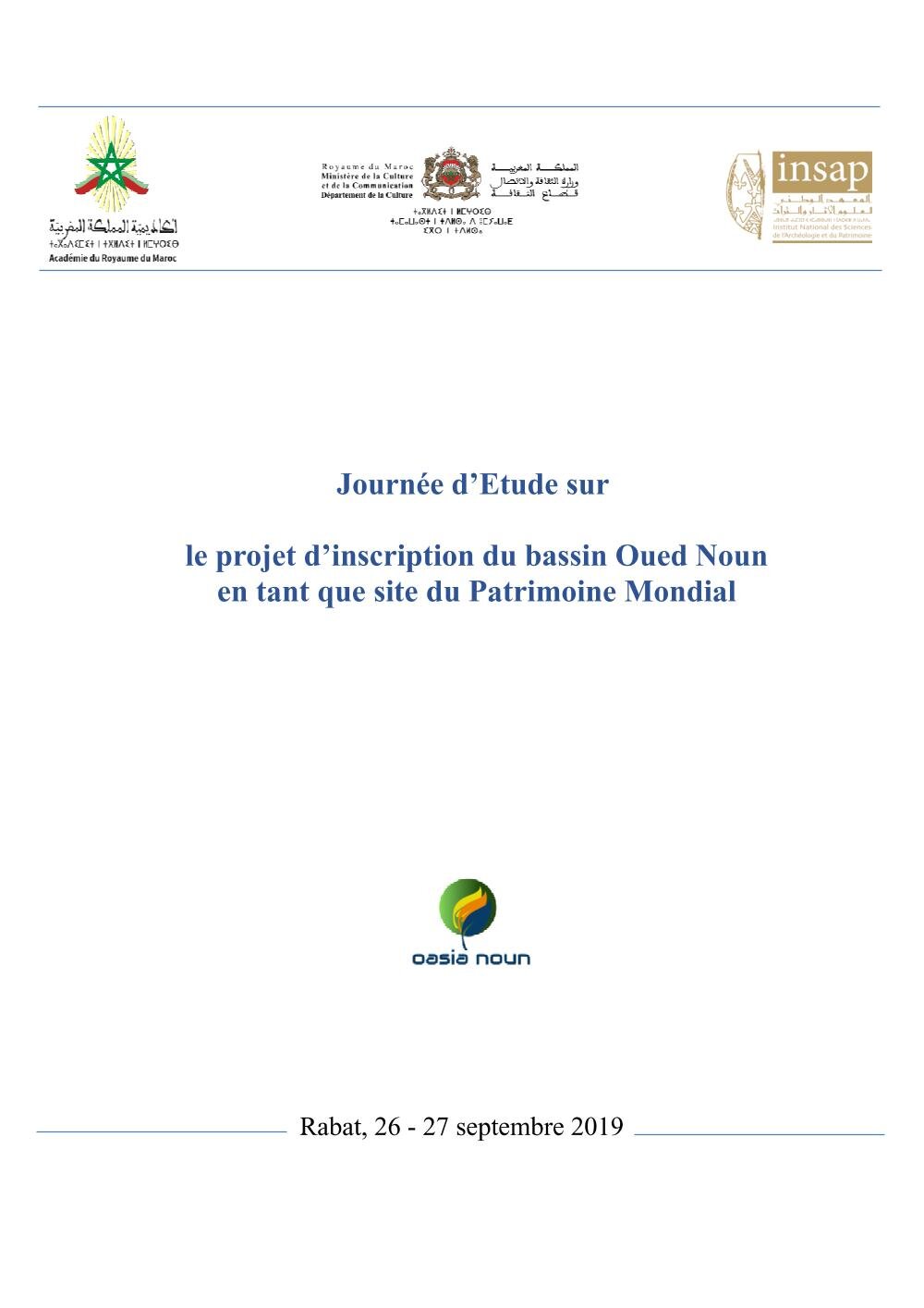
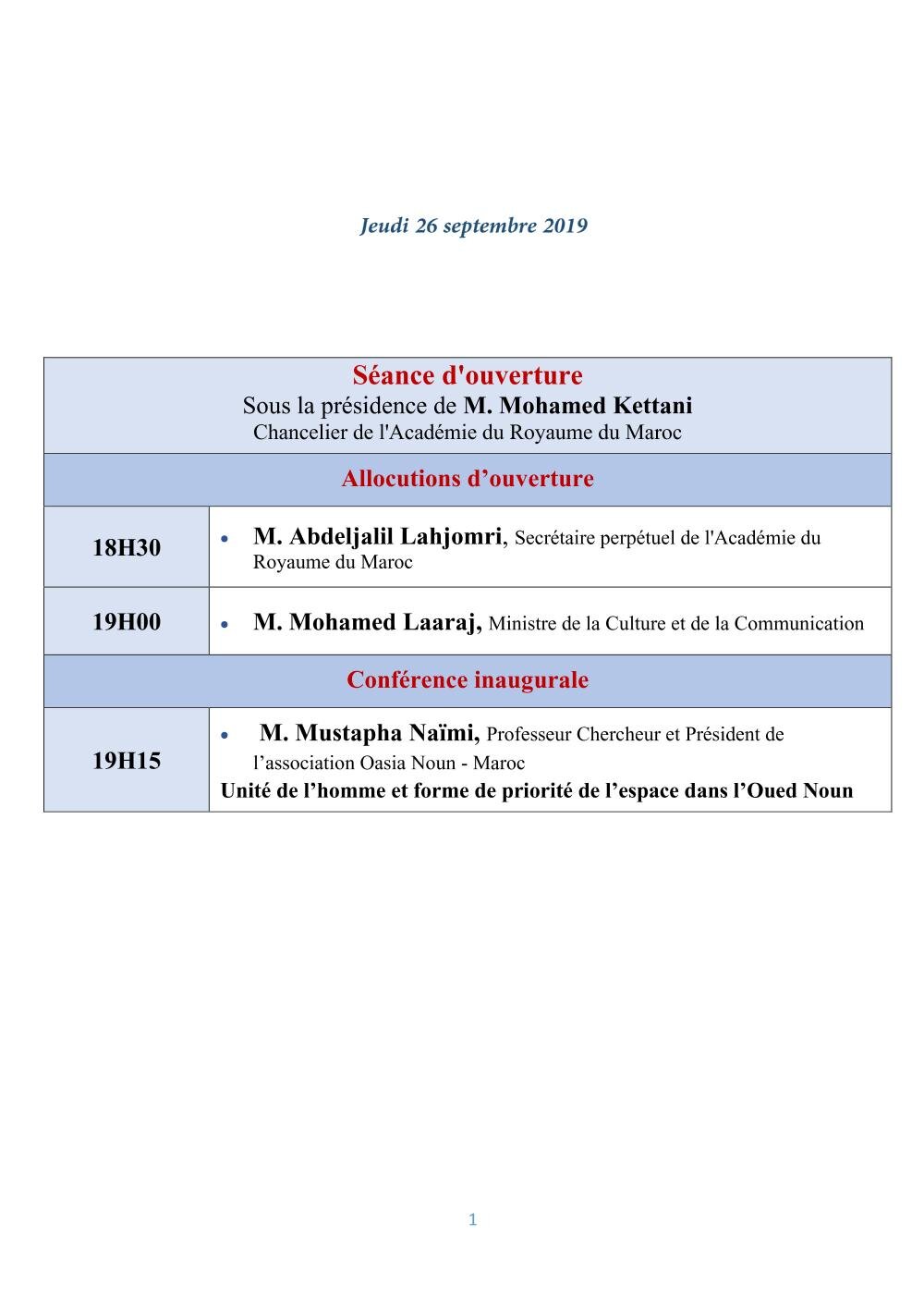
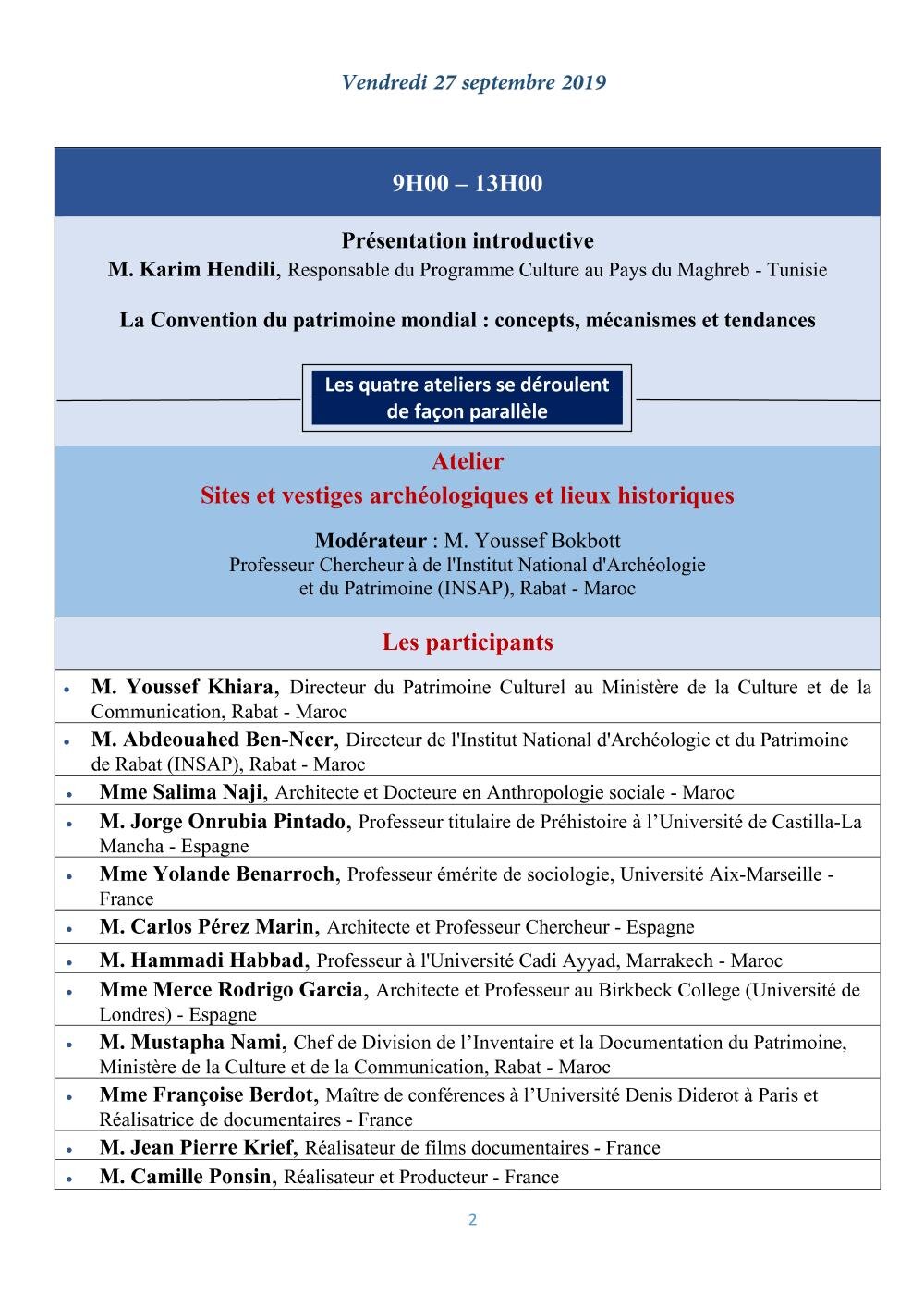
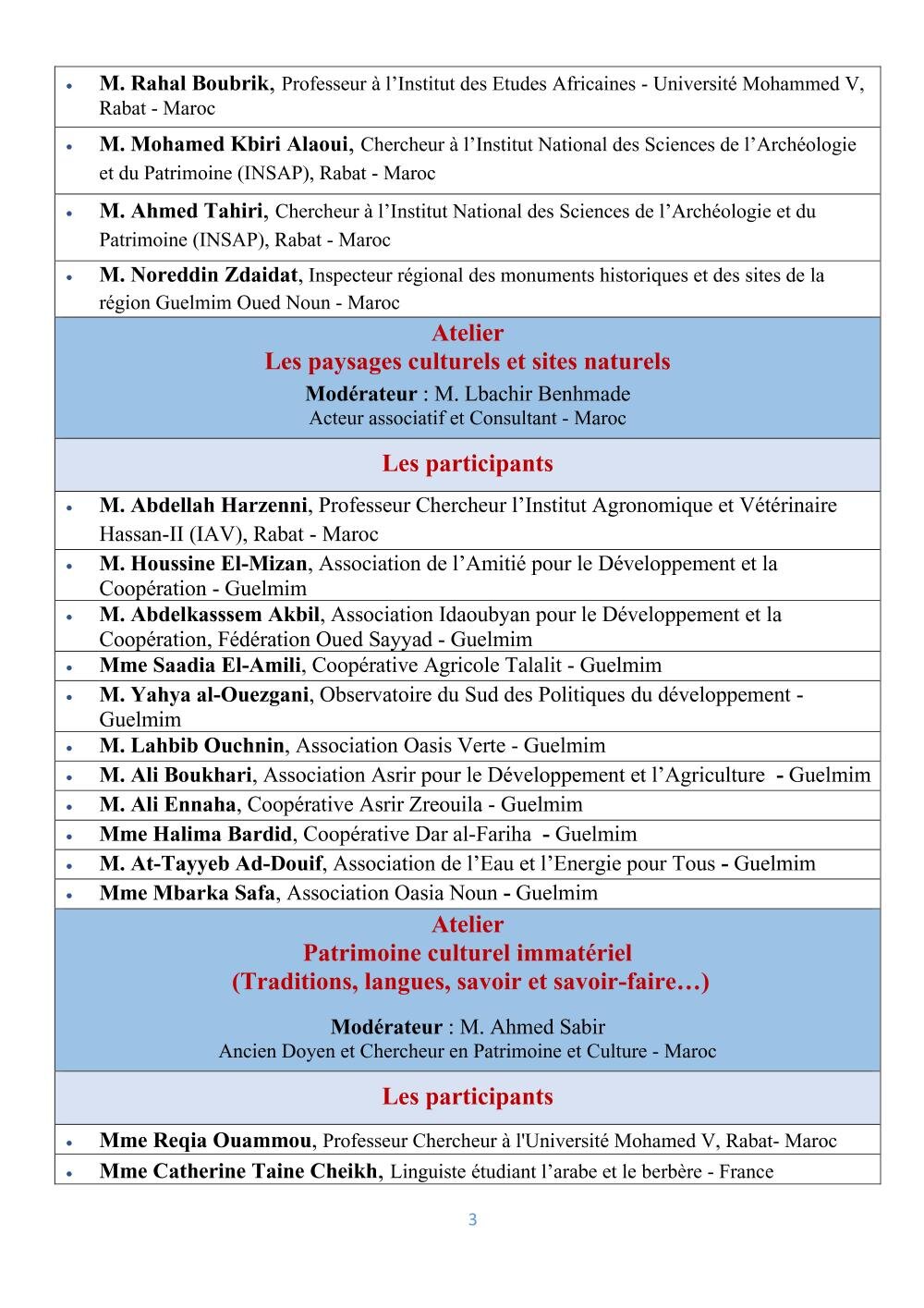
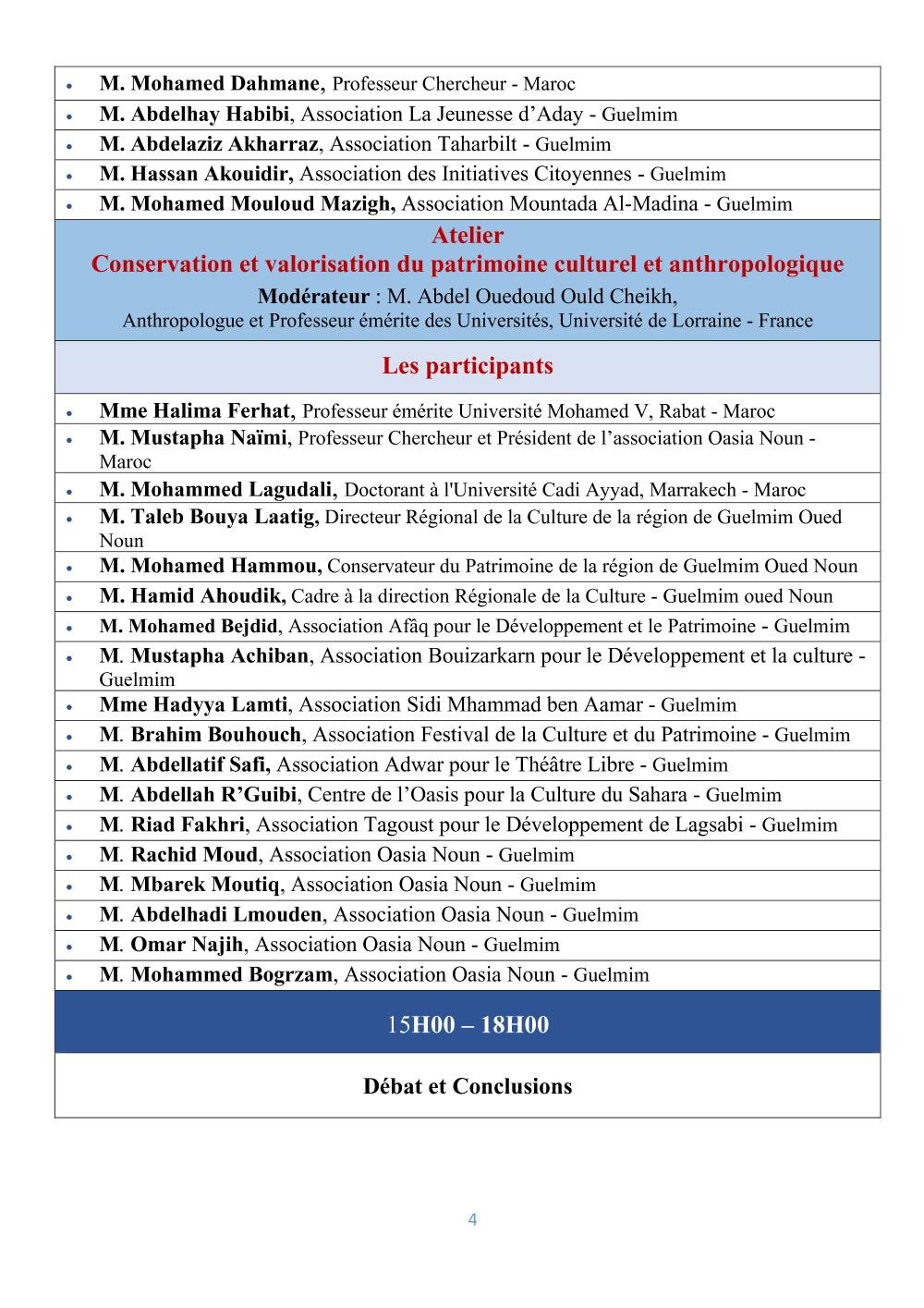
younes rahmoun scholarly convening /
Next week I will participate in a scholarly convening on Moroccan artist Younès Rahmoun in Northampton, MA (USA), organised by curator Emma Chubb from the Smith College Museum of Art, with the collaboration of the Kahn Liberal Arts Institut and the support of The Andy Warhol Foundation for the Visual Arts.
I will talk about the projets (architectural and artistic ones) we collaborated together during the last 20 years.
In addition to Younès convening, I will talk to the architecture students from the Art Department about my experience living, working and researching between the Atlantic Sea, the Mediterranean Sea and the Sahara Sea. With the complicity of Elisa Kim, from the Smith College.
More information about the convening coming soon.






